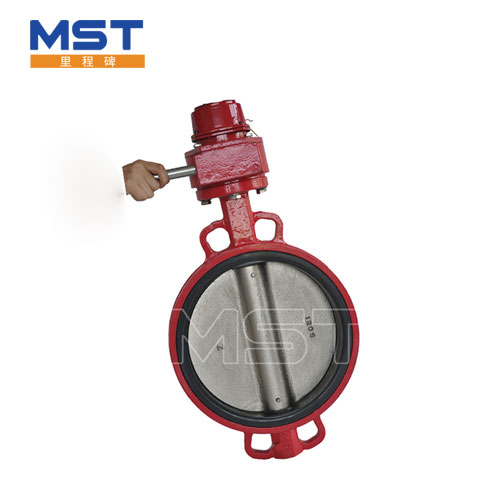Here are key features and characteristics of wafer type butterfly valves
2023-12-21
A wafer type butterfly valve is a type of butterfly valve designed for use between flanges in a pipeline. The term "wafer" refers to the valve's compact and lightweight design, which allows it to fit between two flanges without the need for additional flange gaskets. Here are key features and characteristics of wafer type butterfly valves:
1. Wafer Design:
- The wafer type butterfly valve has a slim profile and is sandwiched between two flanges, secured with bolts. It does not have a flanged body like some other types of valves, allowing for a more compact installation.
2. Quarter-Turn Operation:
- Similar to other butterfly valves, the wafer type operates on a quarter-turn principle. It can be quickly opened or closed with a 90-degree rotation of the valve handle or actuator.
3. Disc Design:
- The valve features a disc or plate that is mounted on a shaft in the center of the valve body. When the valve is fully open, the disc is parallel to the flow, providing an unobstructed passage for the fluid.
4. Sealing Mechanism:
- The sealing mechanism is achieved by pressing the disc against the valve seat. This design provides a tight shut-off when the valve is in the closed position.
5. Resilient Seat Options:
- Many wafer type butterfly valves come with resilient seats made of materials such as EPDM or NBR (Nitrile). Resilient seats provide a tight seal and are suitable for a variety of applications.
6. Flange Compatibility:
- Wafer type butterfly valves are designed to fit between flanges that comply with industry standards. The valve is secured in place by bolts that pass through the valve body and flanges.
7. Manual or Actuated Operation:
- Wafer type butterfly valves can be operated manually using a handle or lever. They can also be equipped with actuators (electric, pneumatic, or hydraulic) for remote and automated operation.
8. Size Range:
- These valves are available in various sizes to accommodate different pipe diameters and flow rates. The size of the valve should match the size of the connecting pipes.
9. Pressure and Temperature Ratings:
- The pressure and temperature ratings of the valve are important considerations to ensure that it can handle the specific conditions of the application.
10. Applications:
- Wafer type butterfly valves find applications in a wide range of industries, including water treatment, wastewater, chemical processing, HVAC systems, and general industrial processes.
11. Corrosion Resistance:
- The valve may have coatings or linings to enhance its corrosion resistance, especially if it is used in corrosive environments.
Wafer type butterfly valves offer advantages such as easy installation, space efficiency, and cost-effectiveness. They are commonly used in applications where a compact and lightweight valve design is preferred, and where flange compatibility is essential. Proper selection based on the specific requirements of the application is crucial for optimal performance.



